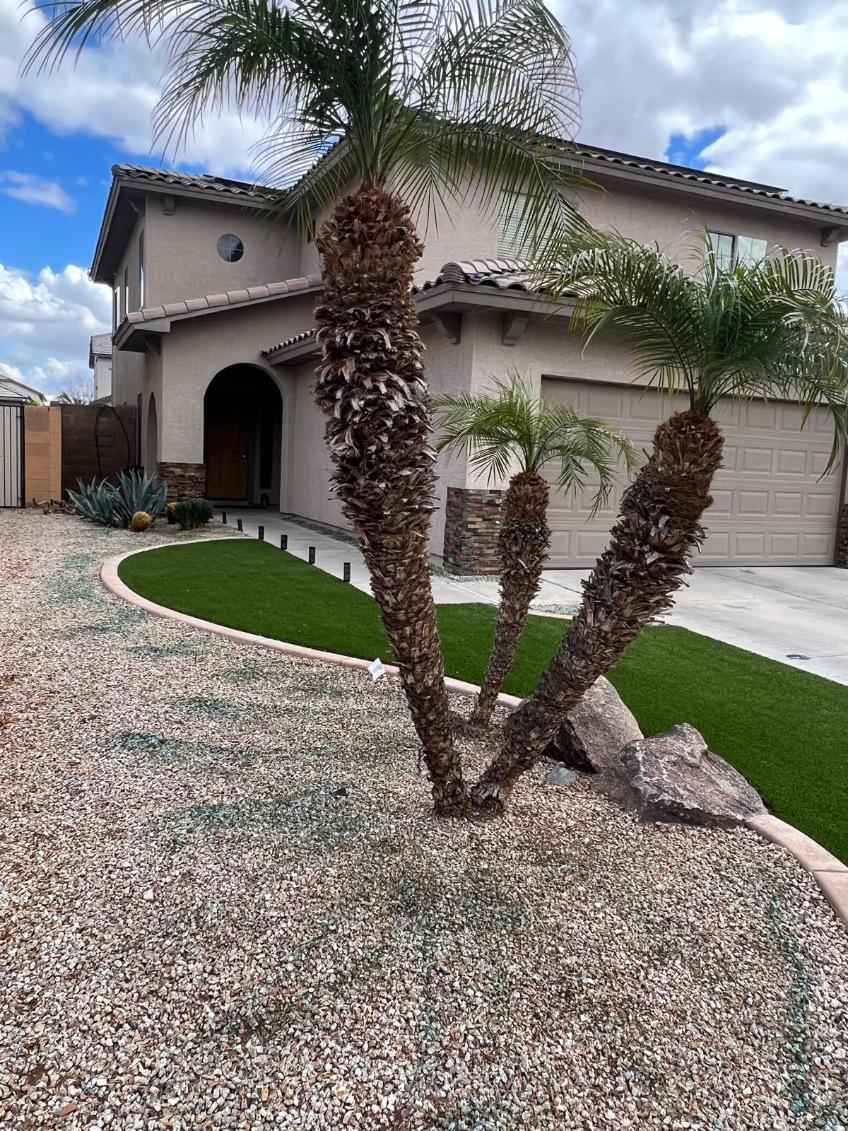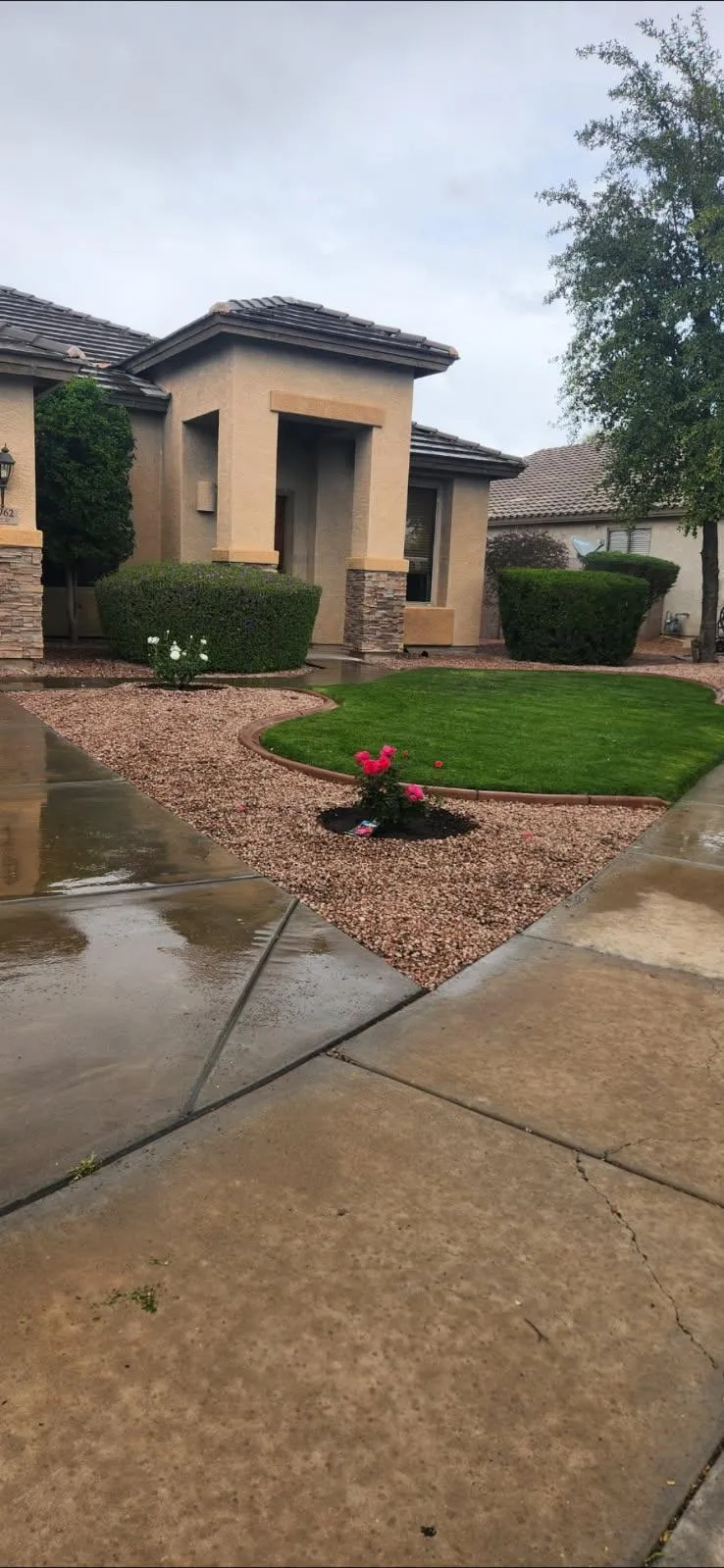7 Breathtaking Desert Landscaping Ideas That Will Transform Your Surprise, AZ Home
Living in Surprise, Arizona means embracing the unique beauty of desert living while tackling the challenges that come with maintaining an attractive landscape in an arid climate. As temperatures regularly climb above 100°F during summer months and water conservation becomes increasingly important, homeowners are seeking sustainable, beautiful, and low-maintenance landscaping solutions that thrive in this distinctive environment. Desert landscaping in Surprise isn't just about placing a few cacti among rocks—it's about creating a harmonious outdoor space that celebrates the natural Southwest aesthetic while providing functionality and comfort for your family. This comprehensive guide explores essential techniques, plant selections, and design approaches specifically tailored to Surprise's climate conditions, helping you transform your outdoor space into a desert oasis that will be the envy of your neighborhood.
Understanding Surprise, AZ's Unique Climate Challenges
Before diving into specific landscaping strategies, it's important to understand what makes Surprise's climate unique. Located in the northern reaches of the Sonoran Desert, Surprise experiences extremely hot summers with temperatures frequently exceeding 110°F. Annual rainfall averages just 8-9 inches, primarily occurring during summer monsoon season (July-September) and winter months. These conditions create specific challenges:
-Extreme heat that can damage many traditional landscape plants
-Limited water resources requiring conservation practices
-Alkaline soil conditions that affect plant nutrient uptake
-Strong desert sun that can cause leaf scorch and plant stress
-Occasional frost during winter nights requiring cold protection for sensitive species
These factors make traditional Eastern or Midwestern landscaping approaches impractical. Instead, successful Surprise landscapes work with nature rather than against it.

7 Essential Desert Landscaping Strategies for Surprise Homes
1. Xeriscaping: The Foundation of Desert Landscaping Success
Xeriscaping—designing landscapes specifically to reduce water usage—forms the cornerstone of successful Surprise landscaping. According to the Arizona Department of Water Resources, properly implemented xeriscaping can reduce landscape water usage by 50-75%. This approach involves:
-Grouping plants with similar water needs (hydro-zoning)
-Installing efficient drip irrigation systems rather than sprinklers
-Using appropriate mulch to retain soil moisture
-Incorporating rainwater harvesting techniques when possible
-Selecting native or desert-adapted plants that thrive with minimal irrigation
Research from Arizona State University indicates that a well-designed xeriscape can save the average Surprise homeowner approximately 30,000 gallons of water annually compared to traditional grass-dominant landscapes.
2. Native Plant Selection for Year-Round Interest
Surprise's native plant palette offers remarkable diversity and beauty. When strategically combined, these plants provide year-round visual interest while requiring minimal maintenance:
For spring blooms, consider:
Penstemon species (beardtongue) with their vibrant tubular flowers
-Brittlebush (Encelia farinosa) featuring bright yellow daisy-like blooms
-Desert marigold (Baileya multiradiata) offering cheerful yellow flowers
Summer standouts include:
-Red bird of paradise (Caesalpinia pulcherrima) with tropical-looking orange-red flowers
-Desert willow (Chilopsis linearis) producing pink-purple orchid-like blooms
-Baja fairy duster (Calliandra californica) with distinctive red powder-puff flowers
Fall and winter structure comes from:
-Various agave species providing dramatic architectural forms
-Desert spoon (Dasylirion wheeleri) with its distinctive symmetrical shape
-Barrel cacti offering sculptural elements and often winter-blooming flowers

3. Hardscaping Elements That Complement Desert Design
In Surprise landscapes, hardscaping often comprises 60-70% of the design, making material selection crucial. Consider:
-Decomposed granite in earth tones that complement your home's exterior
-Flagstone or travertine for patios and pathways that remain cooler underfoot
-Boulders and rock features that create natural-looking elevation changes
-Shade structures like ramadas or pergolas that provide much-needed protection from intense summer sun
-Dry creek beds that serve both aesthetic and functional drainage purposes
Local landscape architects recommend allocating approximately 30% of your landscaping budget to quality hardscaping materials, as these elements provide the permanent structure around which your plant material will evolve.
4. Water-Efficient Irrigation Systems
Despite choosing drought-tolerant plants, proper irrigation remains essential, especially during establishment phases. Modern irrigation technology specifically designed for desert landscapes includes:
-Smart controllers that adjust watering schedules based on weather conditions
-Pressure-compensating drip emitters that deliver precise amounts of water directly to root zones
-Separate irrigation zones for plants with different water requirements
-Subsurface irrigation systems that reduce evaporation losses
The Arizona Municipal Water Users Association reports that upgrading to a high-efficiency irrigation system can reduce outdoor water use by up to 50% while improving plant health through more consistent moisture delivery.
5. Creating Desert-Friendly Outdoor Living Spaces
Surprise residents cherish outdoor living during the pleasant fall through spring months. Incorporating these elements enhances functionality:
-Covered patios positioned to maximize morning sun and afternoon shade
-Outdoor kitchens and dining areas for al fresco enjoyment
-Fire features for warmth during cool desert evenings
-Water features that use recirculating systems to minimize evaporation while providing psychological cooling effects
-Strategic tree placement to create shade zones where needed most
6. Sustainable Soil Preparation Techniques
Surprise's native soil typically contains high alkaline content and low organic matter. Improving soil structure dramatically increases plant success rates:
-Conduct soil tests to determine specific amendment needs
-Add organic matter selectively in planting holes for non-desert nativesUse mineral amendments like gypsum to improve drainage in clay-heavy areas
-Apply appropriate mulch layers to moderate soil temperature and retain moisture
-Consider mycorrhizal inoculants that help plants establish stronger root systems
7. Maintenance Rhythms for Desert Gardens
Successful Surprise landscapes follow maintenance schedules aligned with seasonal changes:
-Winter (December-February): Ideal for major planting projects and pruning
-Spring (March-May): Critical period for deep watering before summer heat
-Summer (June-September): Minimal pruning; focus on irrigation management
-Fall (October-November): Second planting window and preparation for winter
Frequently Asked Questions About Surprise Landscaping
Q: How much water do desert-adapted plants really need?
Even drought-tolerant natives require regular watering during their establishment period (typically 1-2 years). After establishment, most native plants thrive with deep watering every 2-4 weeks during summer, less frequently during cooler months.
Q: Can I have a vegetable garden in Surprise?
Absolutely! Desert vegetable gardening follows different seasonal rhythms than other regions. Focus on cool-season crops (leafy greens, root vegetables) from October through April, and heat-tolerant varieties (okra, Armenian cucumbers) during warmer months. Consider raised beds with shade cloth protection during intense summer periods.
Q: How do I protect my landscape during extreme heat waves?
Temporary shade structures, increased mulch depth, and adjusting irrigation frequency (not necessarily volume) help plants survive extreme heat events. Applying water in early morning hours maximizes absorption before evaporation occurs.
Creating a stunning desert landscape in Surprise, Arizona requires understanding the unique environmental conditions and embracing design principles that work with nature rather than against it. By implementing xeriscaping techniques, selecting appropriate native plants, installing efficient irrigation systems, and incorporating thoughtful hardscaping elements, you can develop an outdoor space that is both beautiful and sustainable. Remember that successful desert landscaping evolves over time—plan for growth, seasonal changes, and the maturing of your landscape elements. With proper planning and maintenance, your Surprise home can showcase the distinctive beauty of desert living while conserving precious resources and creating an outdoor sanctuary for years to come.
FAQs
Your Questions Answered for a Greener, More Beautiful Outdoor Space
What areas does Angel Landscaping serve?
Angel Landscaping serves the metropolitan area of Phoenix and surrounding suburbs. Whether you're in Surprise, Anthem, Cave Creek or Maricopa, we service the Valley!
How do I schedule a consultation?
Schedule a consultation by calling or texting, or by using our website contact form, we will get back to you quickly and provide an honest, comprehensive quote quickly for quality work you and your yard deserve.
What is the typical timeline for a landscaping project?
Typically, a landscaping project takes 2 to 4 weeks from consultation to completion. One-Time cleanups can also be completed in a timely manner, usually within a day (depending on property size) when scheduled.
Do you provide ongoing maintenance services after installation?
Yes, we offer customizable maintenance plans to ensure your landscape remains in excellent condition. These can be weekly, biweekly, or monthly visits depending on your needs and the nature of your landscape.
Can you work with a specific budget?
Absolutely! We can create a plan that meets your budget without compromising on quality. We have over 14 years of experience servicing landscapes in California and Arizona to bring the best to your home.
Are your landscaping practices environmentally friendly?
Yes, we use eco-friendly materials and practices to minimize environmental impact.
